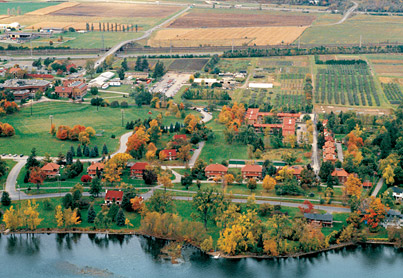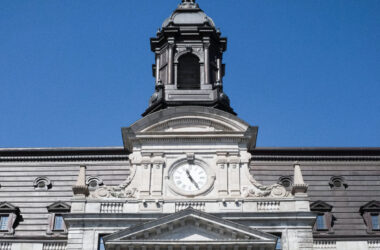Home to the Faculty of Agricultural and Environmental Sciences, which offers majors such as Bioresource Engineering, Nutrition, Environmental Biology, and Agronomy, the Macdonald Campus is a small slice of McGillian greenery on the waterfront of Ste-Anne-de-Bellevue. However idyllic this setting may seem, as a student at the Macdonald campus it can be difficult to feel like a part of the McGill community. Many downtown students have little to no idea what the Macdonald campus is, and Mac students often confine themselves to the West Island when they could interact more with their peers downtown.
While Mac offers small class sizes in a picturesque setting, students often want to experience the downtown Montreal as well, and going between McGill’s two campuses can be a struggle. The bus ride is free, takes about 40 minutes, and offers Wi-Fi access, however, the shuttle only runs from 7 a.m. to 6 p.m. on weekdays. An extension of the shuttle to 8 p.m. every weekday is needed. Extending the shuttle hours is important because of events, classes, and club meetings that take place after 6 p.m., and would help bridge the noticeable divide between the two McGill campuses.
After the shuttle service ends at 6 p.m., students must take the infamous 211 bus, which is a 90-minute ride. Because of this constraint, I often find myself not attending certain events downtown due to time and money. Many students have classes on both campuses. Some classes end as late as 7:30 p.m., which means that these students miss the last shuttle. Club meetings and events, which are difficult to organize during the day due to busy class schedules, often take place in the evening. Furthermore, more shuttle rides would make the probability of missing the shuttle due to student overflow much lower, a relief for students who commute to and from Mac every day.
Advisors stress that extracurriculars are important and that students should be involved as much as possible. For me, this means participating in things that I find worthwhile and important, which are often clubs and events that often take place at both campuses. Mac has a good array of clubs, but they are mainly major-specific and applicable to the campus, including areas such as nutrition, environment, agriculture, and engineering. The downtown campus, however, with a much larger student body, offers more cultural, volunteer, and other niche opportunities for involvement.
Going to an event or club meeting downtown in the evening, capitalizing on the wider range of activities, means planning my whole day around it because of the 3-hour round trip via the bus and metro. I chose not to take a Students’ Society of McGill University (SSMU) Minicourse downtown this semester simply because it ended at 7:30 p.m.
While the shuttle extension would be especially beneficial to Mac students because they would be given the opportunity to expand their interests and try new things downtown, the extension would also benefit downtown students. Not only would club organizers be able to tap into the Mac campus student body for new members; there are quite a few clubs and events at Mac that downtown students can partake in, such as the McGill Wildlife Association, the Out of the Garden Project, and Happy Feet.
A two-hour extension of the shuttle would give Mac and downtown students alike a greater opportunity to explore all that McGill has to offer. Further, keeping both Mac and downtown students better informed about both campuses is necessary to bridge the disconnect between the two student bodies. The issue of finding adequate funding cannot be ignored, but should be examined and negotiated with student well-being in mind: Extending the shuttle hours by two hours would be hugely beneficial to the McGill community.









